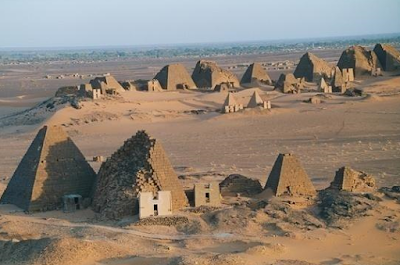 | Dozens of pyramids stand guard in the desert at Meroë, 150 miles north-east of Khartoum. 30m high, Sudan’s tombs were built for the elite of the kingdom of Kush which emerged as a power around the eighth century BC with its capital at Napata (Karima). Dominating the trade route between Egypt and central Africa, Kush grew in wealth and importance.
In the early seventh century BC, Qore (King) Taharqa ruled Egypt as well as Nubia (northern Sudan). Later Assyrians drove the Kushites from Egypt, and around 592 BC an Egyptian-sponsored expedition sacked Napata. The capital then transferred south to Meroë where, from around the third century, some 30 kings and eight queens were interred. | |







No comments:
Post a Comment